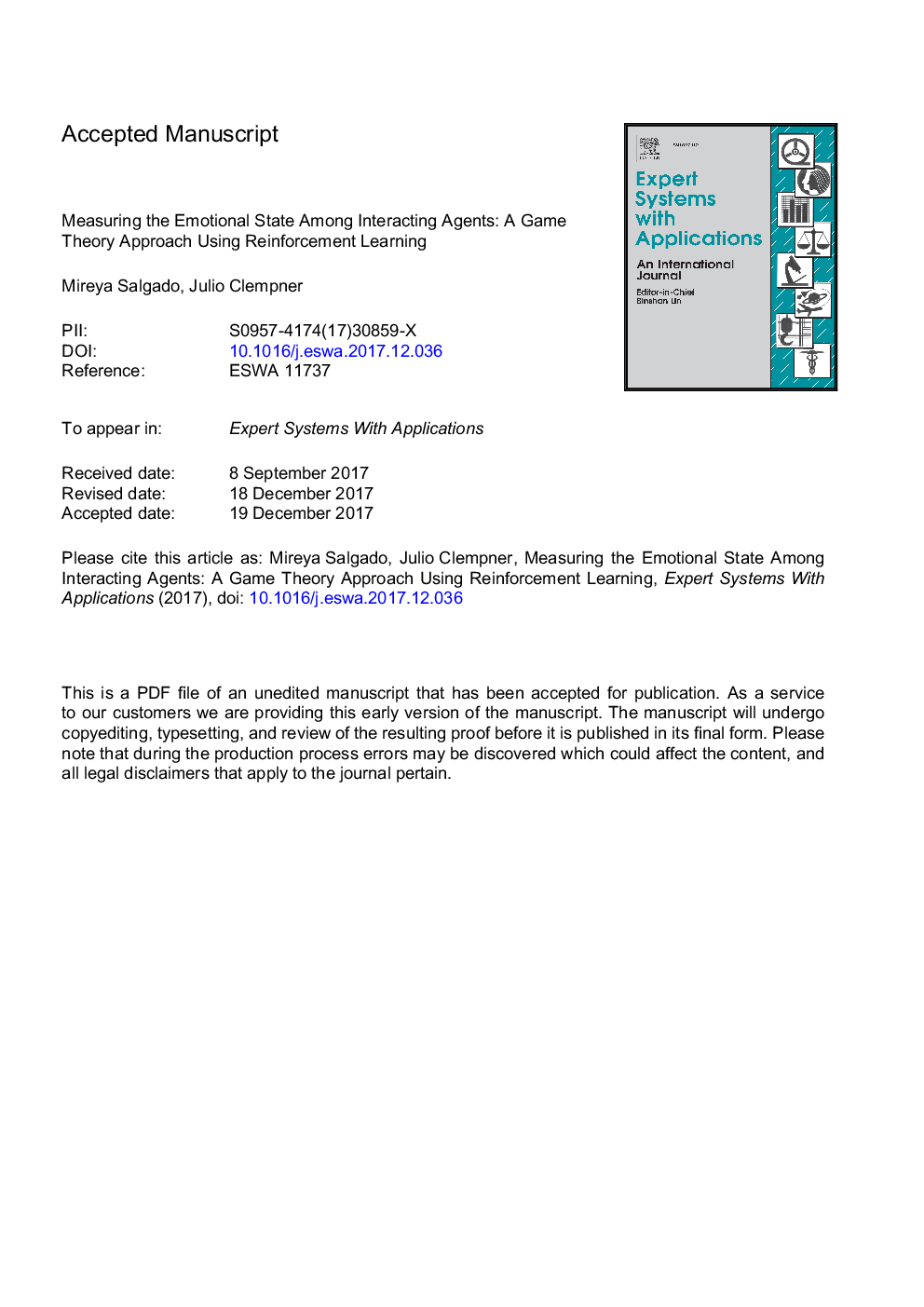ترجمه فارسی عنوان مقاله
اندازه گیری وضعیت عاطفی در میان عامل های درگیر کننده: یک رویکرد تئوری بازی با استفاده از یادگیری تقویتی
عنوان انگلیسی
Measuring the emotional state among interacting agents: A game theory approach using reinforcement learning
| کد مقاله | سال انتشار | تعداد صفحات مقاله انگلیسی |
|---|---|---|
| 91242 | 2018 | 12 صفحه PDF |
منبع

Publisher : Elsevier - Science Direct (الزویر - ساینس دایرکت)
Journal : Expert Systems with Applications, Volume 97, 1 May 2018, Pages 266-275

